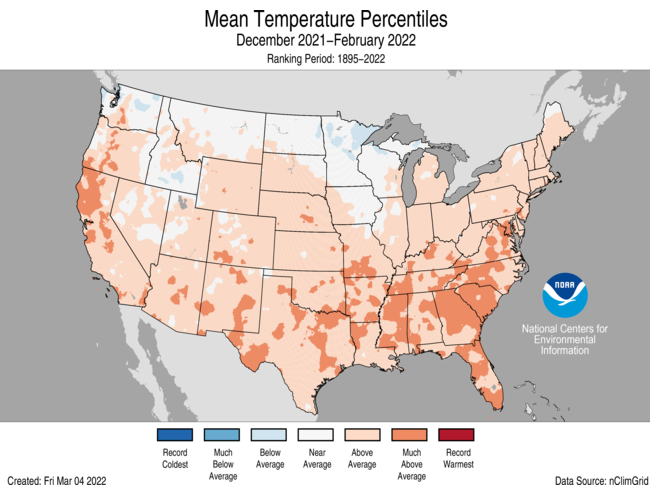How bad was your winter? NOAA releases maps comparing every state

Cars drive on snow covered Interstate 495 North in nearly whiteout conditions during a winter storm in Haverhill, Mass., Friday, Feb. 25, 2022. (AP Photo/Charles Krupa)
(NEXSTAR) – Winter isn’t over just yet, but the experts at the National Oceanic and Atmospheric Administration are already helping us take stock of the season.
The agency released a new climate report Tuesday, which compares the 2021-2022 winter season to every winter before it dating back to 1895.
This winter, between December and February, the average temperature on the contiguous United States was 34.8 degrees Fahrenheit. That sounds like a pretty low number, but it’s actually higher than average — about 2.5 degrees warmer, according to NOAA’s National Centers for Environmental Information.
This winter wasn’t just warmer than average — it was also drier. Specifically, it was the 12th driest winter on record in the past 127 years, which is as long as NOAA has been collecting data.
But those figures refer to national averages. How cold, wet or snowy it’s been over the past couple months depends on where you live.
The first map, seen below, shows how much warmer (or cooler) than average it was between December and February, based on location.

Pretty much every state saw a warmer-than-average winter, with just a few exceptions in parts of Washington, Idaho, Minnesota, northern Wisconsin and Michigan’s Upper Peninsula.
When it comes to precipitation, the story is more complicated. A February winter storm that stretched from Texas to Maine pushed many parts of the country into above-average categories thanks to freezing rain, snow and ice.

The West, which relies heavily on winter rain and snow to restore its water supply, saw some rain early in the winter, followed by an especially dry February. That leaves many states in continuing drought conditions.
Louisiana saw its third driest winter on record, according to the report, while Nebraska saw its fourth driest and Kansas saw its fifth driest.
The maps above only show the contiguous 48 states, but NOAA has more data and maps showing winter in Hawaii and Alaska here.
There are still a few more weeks left in the winter season. The first day of spring arrives on Sunday, March 20.









